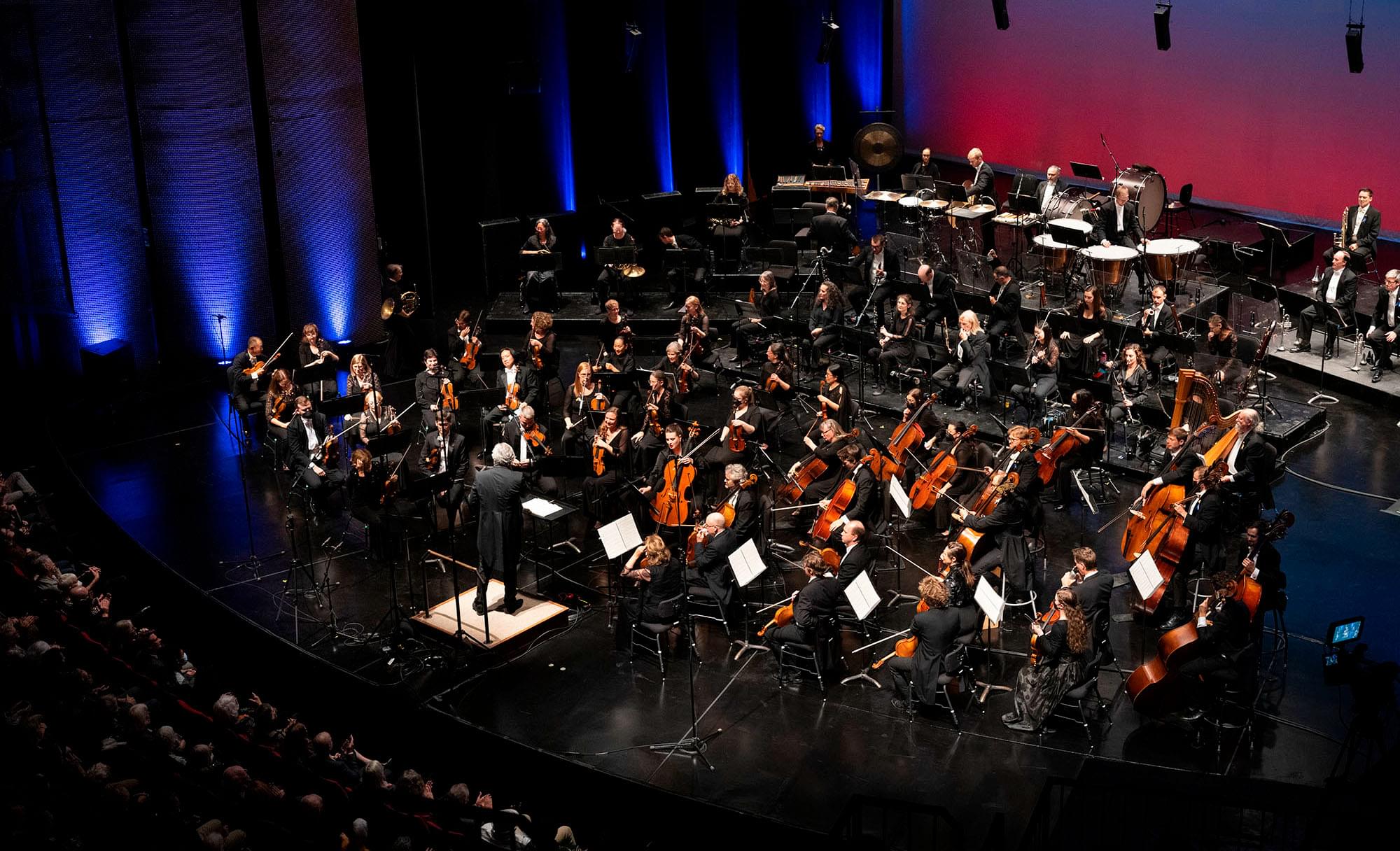
One word: Sibelius
- News

By Anna Schwartz
Have you ever wondered what it’s like to stand in front of an entire orchestra with your own instrument as your only source of comfort? Your heart pounding in your chest, looking out at a sea of faces staring directly back at you. Why are they staring at only you? Because you are the soloist, steeling yourself to play one of the most challenging and virtuosic genres of music written in history: a concerto.
Perhaps not every soloist’s heart pounds like it did their first time on stage. But performing a concerto presents a unique musical challenge that forces even the most competent musicians out of their comfort zones, stretching their technical and artistic abilities to the absolute limit. The composers writing these concertos did so with a purpose: to write music featuring one specific instrument. The most common instruments highlighted are likely piano and violin, but concertos can be written for any instrument. There is even an aptly named “Typewriter Concerto,” composed by American Leroy Anderson in 1950. And yes, it features the sharp, clacking sounds of an actual typewriter. Usually, the soloist is a percussionist due to the drum-adjacent technical skills of pushing the “notes” of the typewriter in time with the music.
Orchestras feature concertos throughout their seasons, bringing soloists to their stage from far and wide. The Winnipeg Symphony Orchestra has done just this thus far in their season, featuring all sorts of instruments in performance. Why, then, this far into our season, are we thinking so much about the meaning of a concerto? One word: Sibelius.
Jean Sibelius was a passionate, short-tempered, self-destructive man, according to the late Program Writer Michael Steinberg of the San Francisco Symphony. He wrote one, and only one, concerto during his tumultuous career as a composer. The solo part of his Violin Concerto in D Minor starts like no other: one unwavering note hangs suspended in the air before descending into a waterfall of motion from the violin soloist. This singular note, which enters off the main beat, is considered one of the most beautiful openings in the violin solo repertoire.

Jean Sibelius
However, despite this delicate beauty, the construction of the rest of this work was troubled. Sibelius drank heavily during this period of his life (the concerto was finished in 1904 and revised in 1905). The premiere of the piece was disastrous – Sibelius selected Victor Nováček as the soloist, and despite being an adequate player, Nováček was much more well-known as a teacher of violin repertoire. After such a public fumble, Sibelius went back to the drawing board and rewrote much of the concerto. The second premiere in 1905 in Berlin was significantly more successful.
Besides being breathtakingly beautiful, this concerto is considered one of the most challenging pieces of solo violin repertoire ever composed. The twists and turns of the melody, combined with dizzyingly fast passages and spectacular high notes, make this piece one to be reckoned with. Want to hear the turmoil and beauty of this work for yourself? Join us on March 7 to hear world-class violinist Blake Pouliot take on this monstrous work alongside your WSO.
We hope to see you there!
Anna Schwartz (she/her) is a multidisciplinary writer, educator, and conductor. She has written and spoken about the benefits of music and being a part of music-making throughout Manitoba and Northern Ontario.


![20640-WSO-2025-26-Season-Creative-Cello-Festival-Grand-Finale-[960x540]-Mar2025-FNL](https://images.wso.ca/uploads/2025/03/20640-WSO-2025-26-Season-Creative-Cello-Festival-Grand-Finale-960x540-Mar2025-FNL.jpg?resize=480%2C300&gravity)









